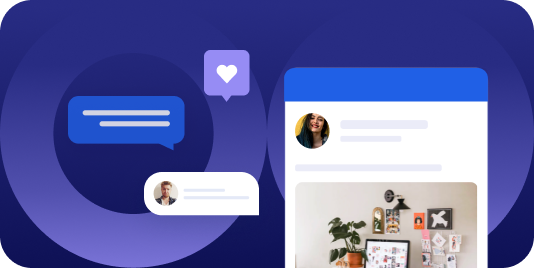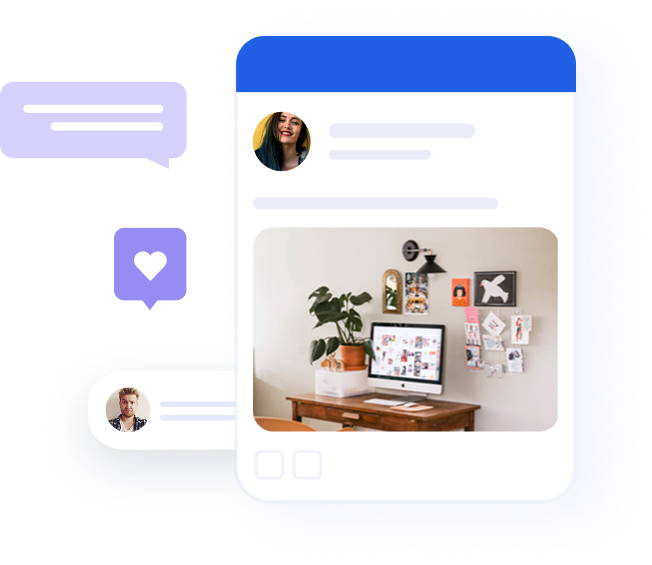10 expert-backed tips for building an unstoppable employee advocacy movement

Table of contents
- 1. Start with three core ingredients: education, incentives, communication
- 2. Turn training into a company-wide event
- 4. Switch up your contests to keep the game fresh
- 5. Show leadership the ROI, through data
- 6. Make communication personal, not programmatic
- 7. Relaunch strategically when engagement dips
- 8. Partner with HR and IT to scale onboarding and automation
- 9. Invest in the right tech, because tools matter
- 10. Always answer: “What’s in it for them?”
- Build your employee advocacy movement
The conversation around employee advocacy has evolved. We’re no longer asking why to invest in it. The question now is:
How do you build an advocacy program that sticks? One that employees want to be part of and stay part of?
In our latest webinar From program movement: The three secrets to an unstoppable employee advocacy program, we heard from two powerhouse leaders who’ve built advocacy engines that are overflowing with demand and driving measurable business impact.
Meet the experts:
Ale Schlesinger, Social Media Manager at HiBob, who built a program so popular that employees request access faster than she can grant it.
Sarah Hankins, Senior Marketing Content Specialist at CBIZ, who designed a hands-on training tour that turned curiosity into company-wide participation.
Together, they shared their playbook, challenges, pivots, metrics, automation tactics, and what really works. Here’s what every B2B advocacy leader should take away.
1. Start with three core ingredients: education, incentives, communication
“You could have a really great program with lots of great content, but it’s not going to do anything for you if your advocates don’t really know how to participate.” – Sarah Hankins, CBIZ
Sarah laid out her foundational framework: if people don’t know how to participate, or why it matters to them, your program will never reach critical mass. Here’s how both Sarah and Ale bring those three core ingredients to life:
Education: build confidence and clarity from day one
Both experts stress that education can’t be one-and-done.
At CBIZ, Sarah offers:
- Live trainings for offices and teams
- LinkedIn optimization tips
- Personal branding guidance
- In-person and virtual onboarding sessions
At HiBob, Ale partnered with Oktopost’s team to host multi-time zone trainings, covering features, tips, and platform navigation, always tying it back to personal value.
Incentives: create immediate value and long-term motivation
HiBob runs a generous prize structure: quarterly winners get up to $900 in gift cards, and annual winners can earn $1,500. But more important than the prize is the perceived value:
- Advocates see more engagement on their posts
- They grow their networks
- Their contributions are publicly recognized
Communication: keep dialogue open, responsive, and personal
Sarah personally onboards each new user and makes sure they know she’s available. She invites feedback, answers questions quickly, and shares success stories in quarterly sessions and year-end recaps.
Ale reinforces the message through internal tools like Bob (HiBob’s HR platform) and Slack, constantly reminding employees that the program is active, valuable, and open to everyone.
2. Turn training into a company-wide event
“It all started with one in-person training in Kansas City… and I couldn’t believe the buzz it generated.” – Sarah Hankins, CBIZ
Sarah’s advocacy roadshow was born from one standout session that created unexpected excitement, people were literally pulling coworkers into the room to hear about Oktopost and their employee advocacy program. That energy inspired her to create a 12-stop lunch-and-learn tour, with sessions on:
- How to update and optimize your LinkedIn
- What it means to be a thought leader
- Why social sharing matters in B2B
- How to use Oktopost effectively
Why it worked:
- It demystified the program in a fun, non-corporate way
- It created FOMO and peer influence (“Hey, did you go to the Oktopost training downstairs?”)
- It made advocacy part of culture, not just tech
Can’t go on tour? Sarah recommends:
- Hosting team-specific Zoom trainings
- Building a quarterly “social skills” session into onboarding
- Pairing training with a challenge to drive activation
The key is making it feel like an event, not just a tutorial.
3. Use gamification to build long-term momentum
“It’s kind of like a Trojan horse. They join for the prizes but they stay because they see the value.” – Sarah Hankins, CBIZ
At HiBob, Ale has built a robust incentive system. But she’s clear: gamification isn’t just about points, it’s about creating moments of motivation. Her team uses:
- Leaderboards that reset each quarter
- Public recognition in internal platforms
- Custom prize structures that evolve over time
At CBIZ, Sarah doesn’t have the same budget flexibility. But that hasn’t stopped her from using gamification to drive momentum. Her low-cost, high-impact strategies include:
- Swag bags
- Bluetooth speakers
- Raffles for anyone who shares a minimum number of posts
- Shoutouts during company calls
“You don’t need a huge prize to get people excited. Sometimes it’s just the recognition or the fun of the challenge.” – Sarah Hankins, CBIZ
The outcome is the same: participation grows, and sharing becomes a habit, not a task.
Recommended for further reading
4. Switch up your contests to keep the game fresh
“We switch up the game every quarter… so people who didn’t win this time feel like they have a new shot.” – Ale Schlesinger, HiBob
Ale rotates the scoring criteria every quarter to keep things fresh and inclusive:
- One quarter might reward engagement
- Another might reward content suggestions
- Another might reward consistency or originality
Sarah complements her program with randomized raffles:
“I’ll say, ‘Share three posts by July 1st and you’re entered to win.’ It gives everyone, regardless of leaderboard ranking, a chance to participate.”
This mix of merit-based and chance-based recognition keeps people curious, hopeful, and involved.
5. Show leadership the ROI, through data
“The answer is data. Honestly, the answer is always data.” – Ale Schlesinger, HiBob
When Ale needed to secure budget and internal support, she built a data-forward presentation that connected advocacy to real business value. Key takeaways included:
- How employee posts generate higher reach than corporate pages
- How engagement impacts lead gen and traffic
- Why employees’ networks unlock visibility corporate posts can’t
“If you’re starting from zero, bring in use cases. If you’re relaunching, show past success. Either way, bring numbers.”
6. Make communication personal, not programmatic
“Even if the program gets big, people need to feel like it’s personal. That they can come to you.” – Sarah Hankins, CBIZ
Sarah emphasizes the importance of ongoing, human communication. Her standout tactics:
- Personal onboarding emails from her own personal email address
- Quarterly performance recaps
- A year-end “Oktopost Wrapped” video showcasing top advocates and program-wide stats
- A survey link in the wrap-up so advocates can suggest improvements
“Some people just don’t know what their posts are doing for the company. Showing them their impact is what keeps them engaged.”
7. Relaunch strategically when engagement dips
Rather than rolling things out bit by bit, Ale treated her program relaunch like a campaign. She combined:
- A refreshed leaderboard and point system
- Updated prize tiers
- Live training sessions across time zones
- Strategic reminders in HiBob’s internal comms platform
- A clear focus on “What’s in it for you?”
The result:
- 155% increase in posts
- 117% increase in reach
- 8,400+ sessions in two months
8. Partner with HR and IT to scale onboarding and automation
“It became a full-time job just keeping up with access, new hires, and seat limits… so I automated as much as I could.” – Ale Schlesinger, HiBob
Ale partnered with HR and IT to:
- Add Oktopost to all new hire’s onboarding in Week 1
- Include links to a training recording, incentive deck, and signup form
- Surface Oktopost in each advocate’s SSO dashboard
- Automatically remove inactive users after 90 days
Why remove inactive users? To make room for new, enthusiastic participants.
“I have a waitlist of people who want in. If someone hasn’t been active in 90 days, I want that seat to go to someone who will be.” – Ale Schlesinger, HiBob
This approach helps the program stay fresh, lean, and focused on active engagement, not passive signups.
9. Invest in the right tech, because tools matter
“I did the research. I looked at every platform. Oktopost was the one that made sense.” – Ale Schlesinger, HiBob
Both leaders emphasized how vital Oktopost is to scaling their program. Their favorite features?
- Featured content (priority posts via email)
- Gamification & leaderboards
- Repost feature for sharing native LinkedIn content
- Social BI dashboards (including custom text blocks for narrative insights)
“We’ve always used Oktopost at CBIZ, our support has been amazing. Any feedback I get, I pass along, and I know it’ll be looked at.” – Sarah Hankins, CBIZ
Most importantly, they trust their CSMs (shoutout to Josh Sloane and Luke Dreyer) to help them plan launches, adapt tactics, and get the most out of the platform.
10. Always answer: “What’s in it for them?”
“Every feature that you talk about, please tie it back into what they’re getting out of it.” – Ale Schlesinger, HiBob
This theme came up again and again. Whether you’re presenting to executives or onboarding employees, if you want adoption, speak their language.
- For leadership: advocacy extends brand reach
- For sales: it increases visibility and trust
- For employees: it builds their voice, their network, and their professional brand
“It really is in everyone’s best interest, or we wouldn’t be doing it.”
Build your employee advocacy movement
Advocacy programs don’t go viral on their own. They succeed when someone champions them with clarity, creativity, and consistency, just like Ale and Sarah.
At Oktopost, we help B2B brands build employee-first, culture-driven advocacy programs that scale, from onboarding and gamification to analytics and executive reporting.
Ready to build yours? Let’s talk, we’d love to help.




